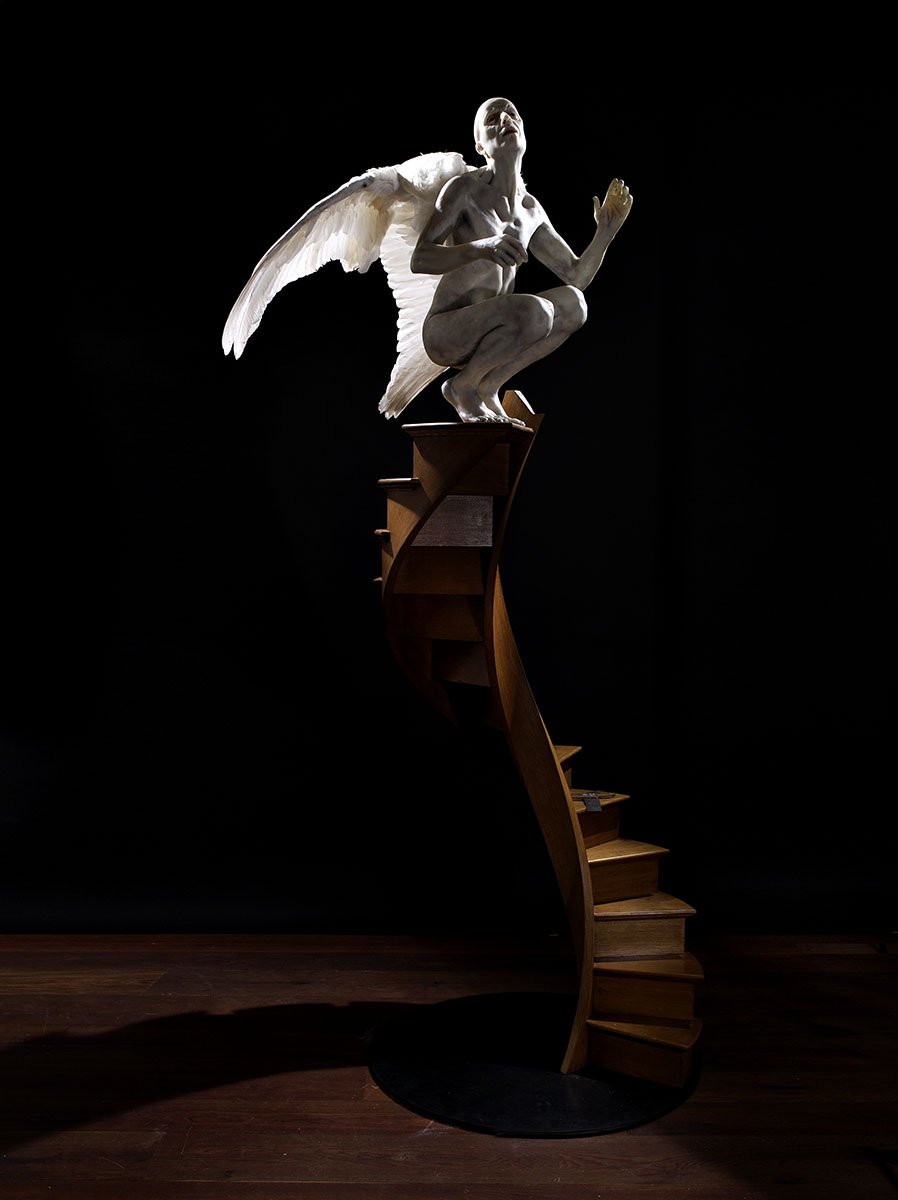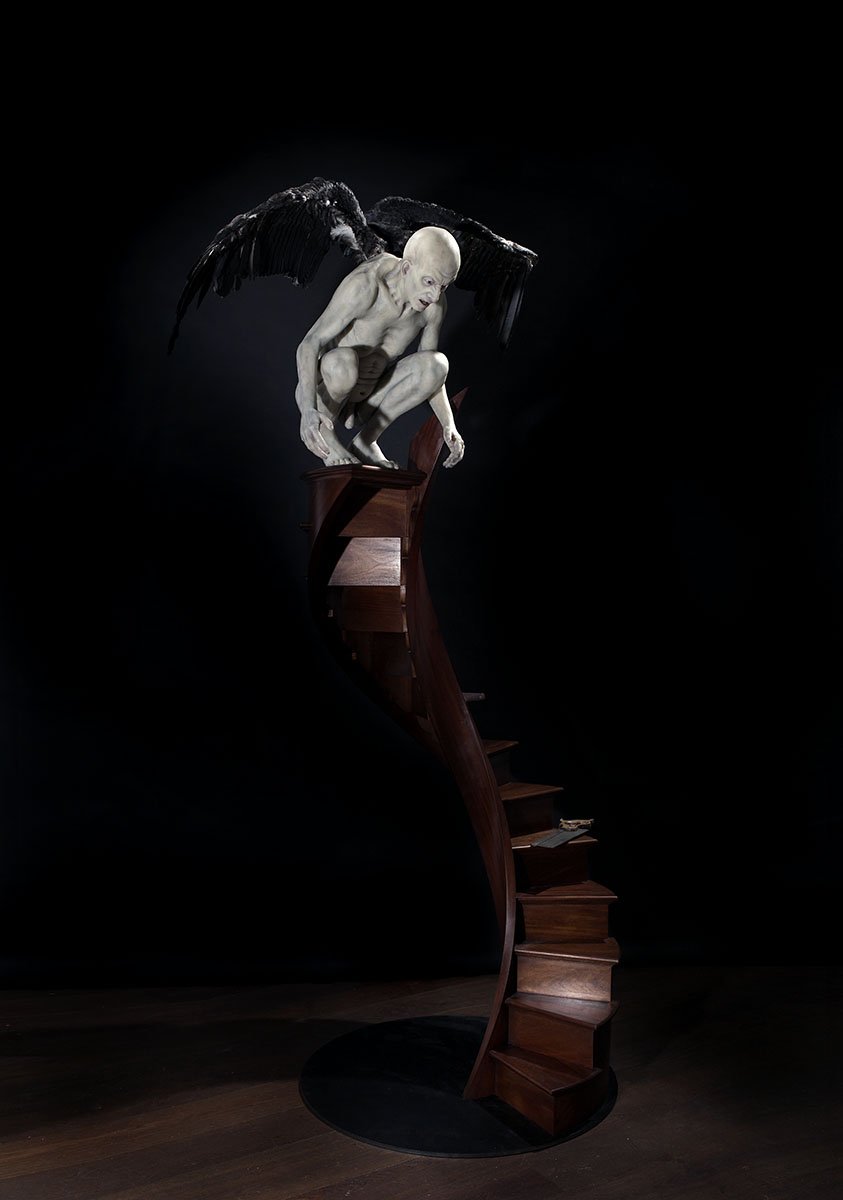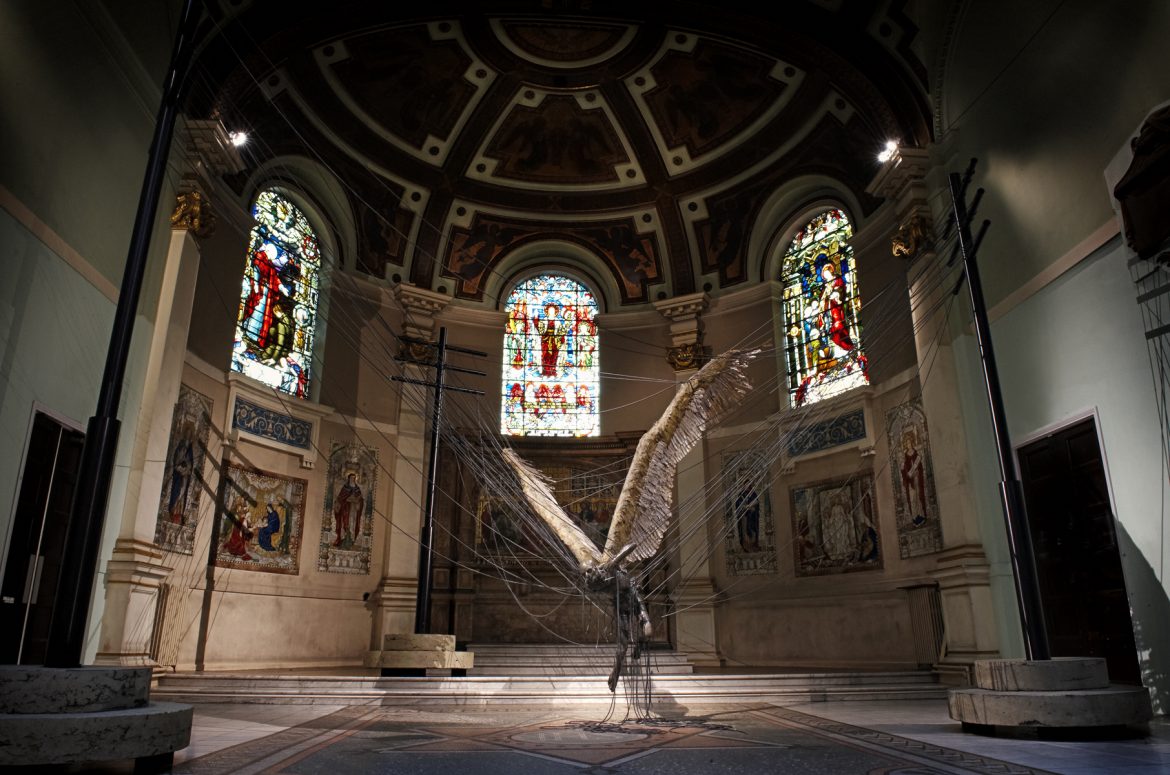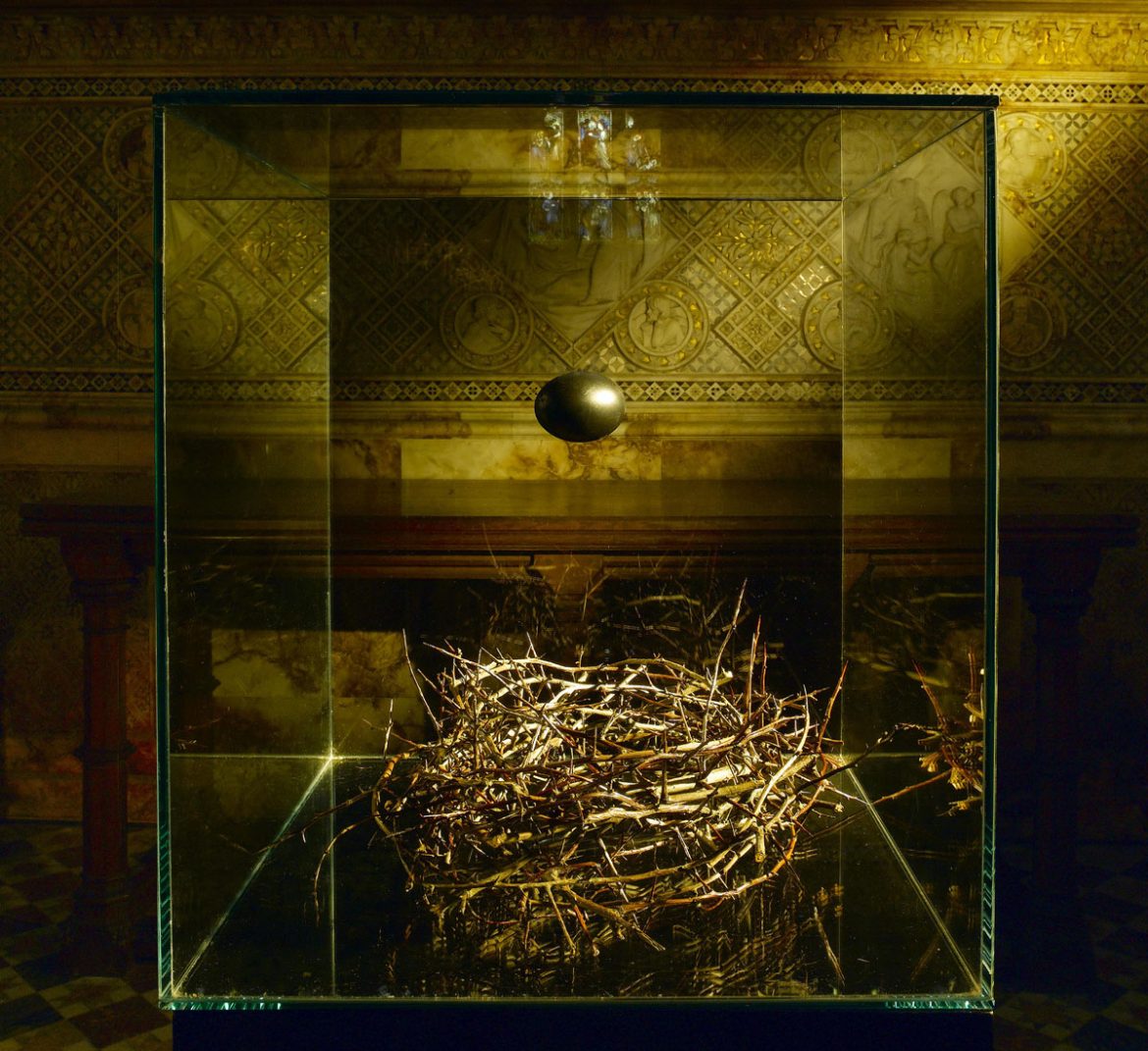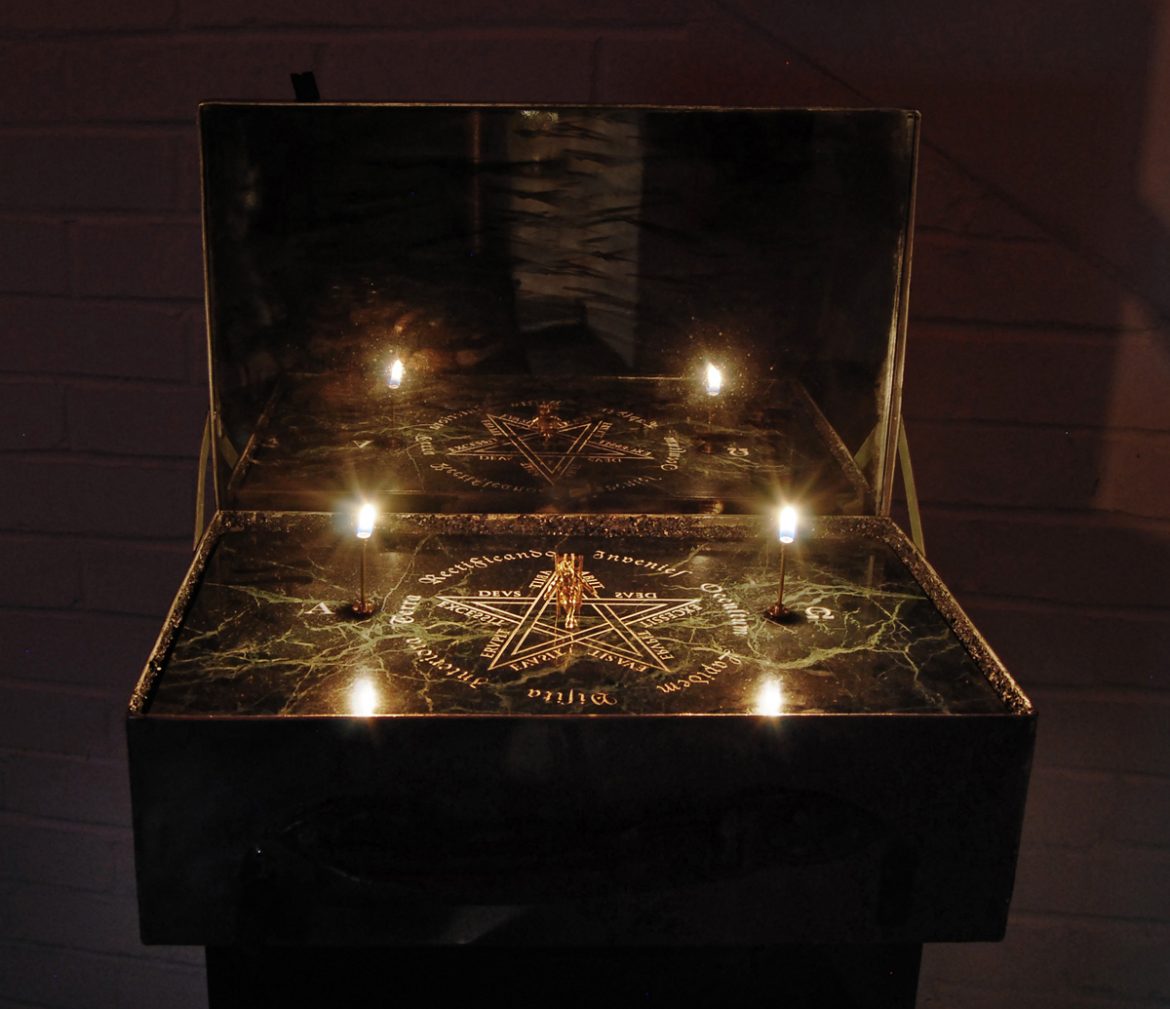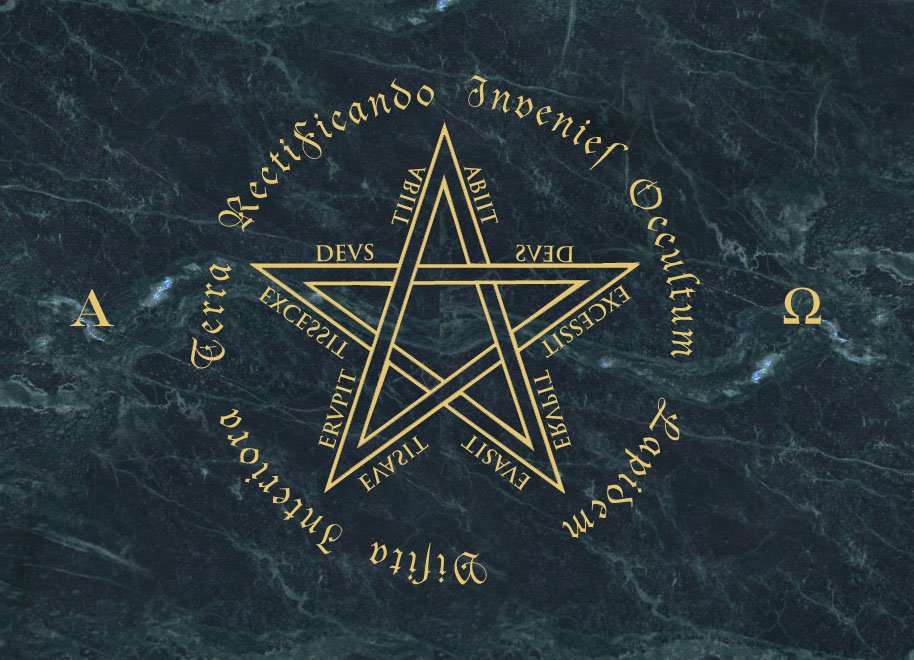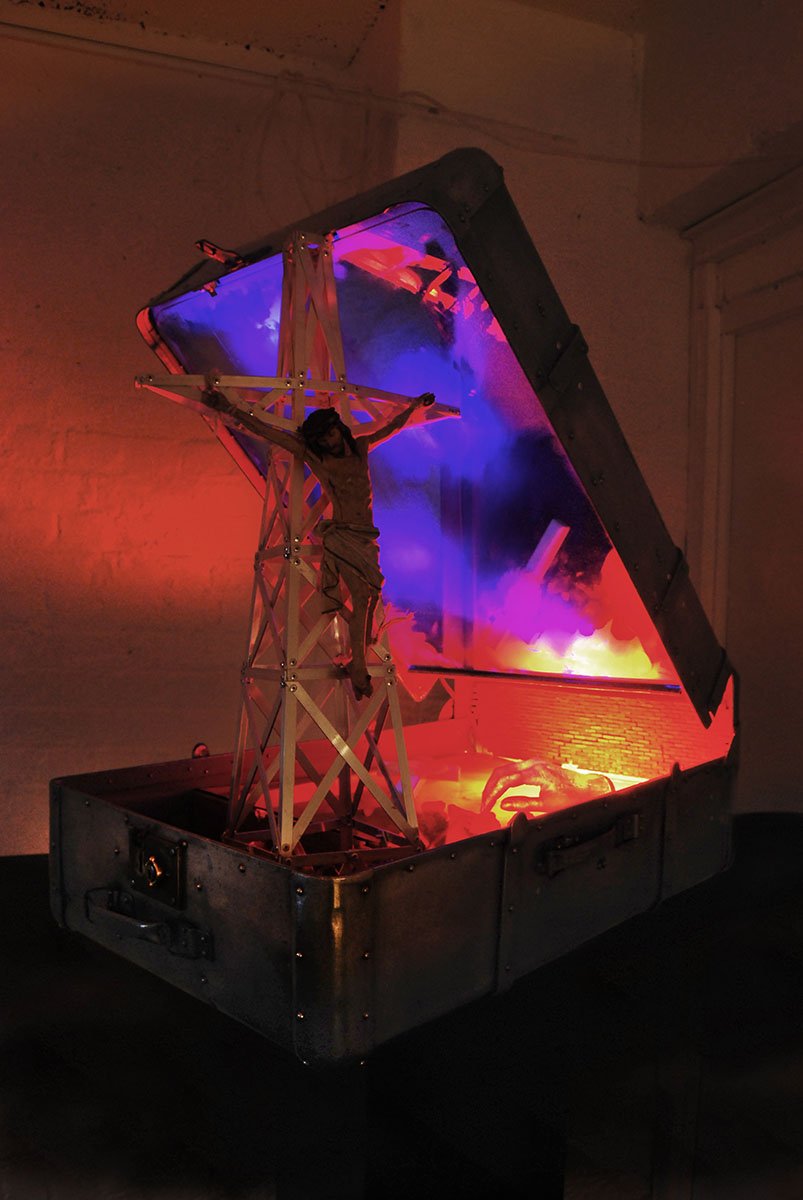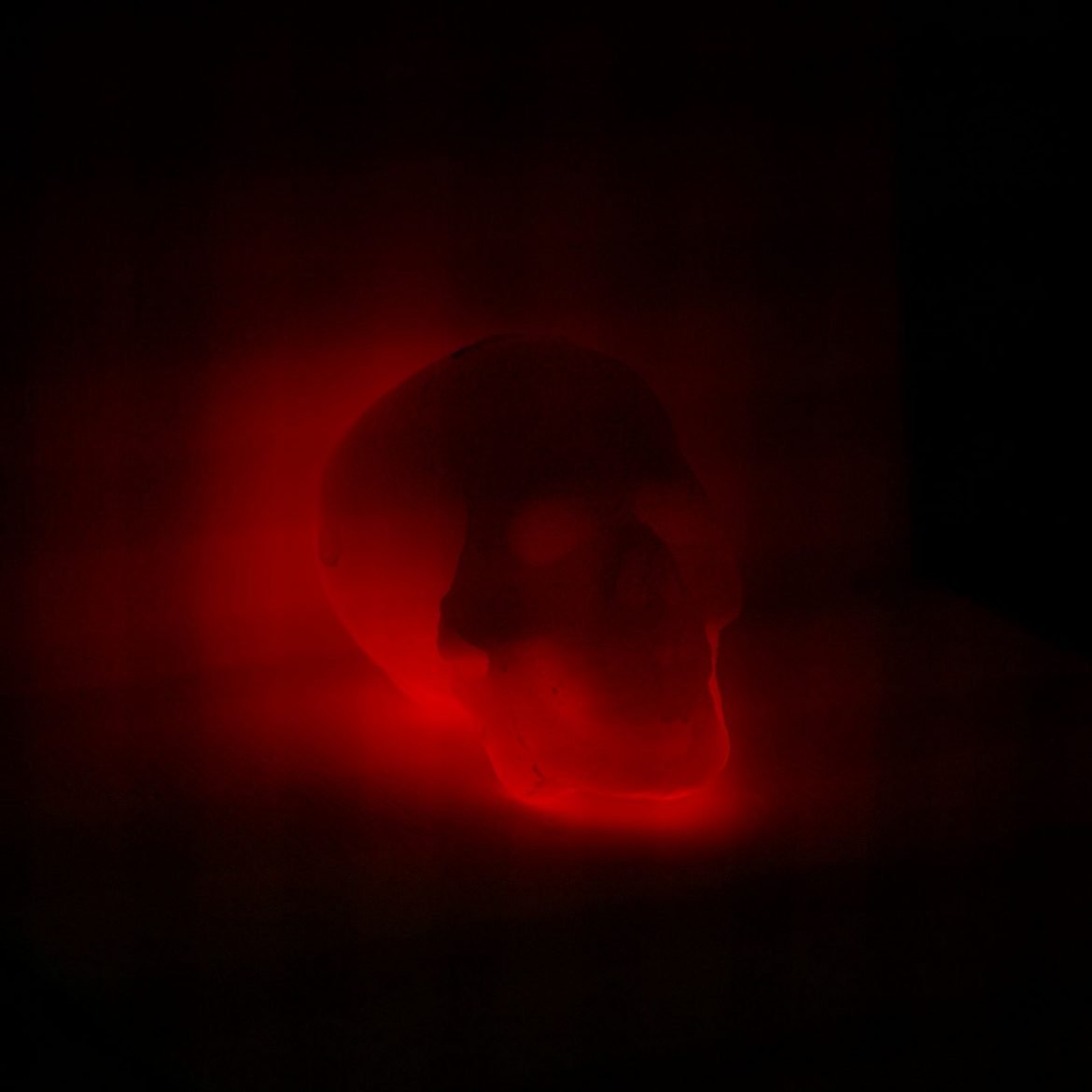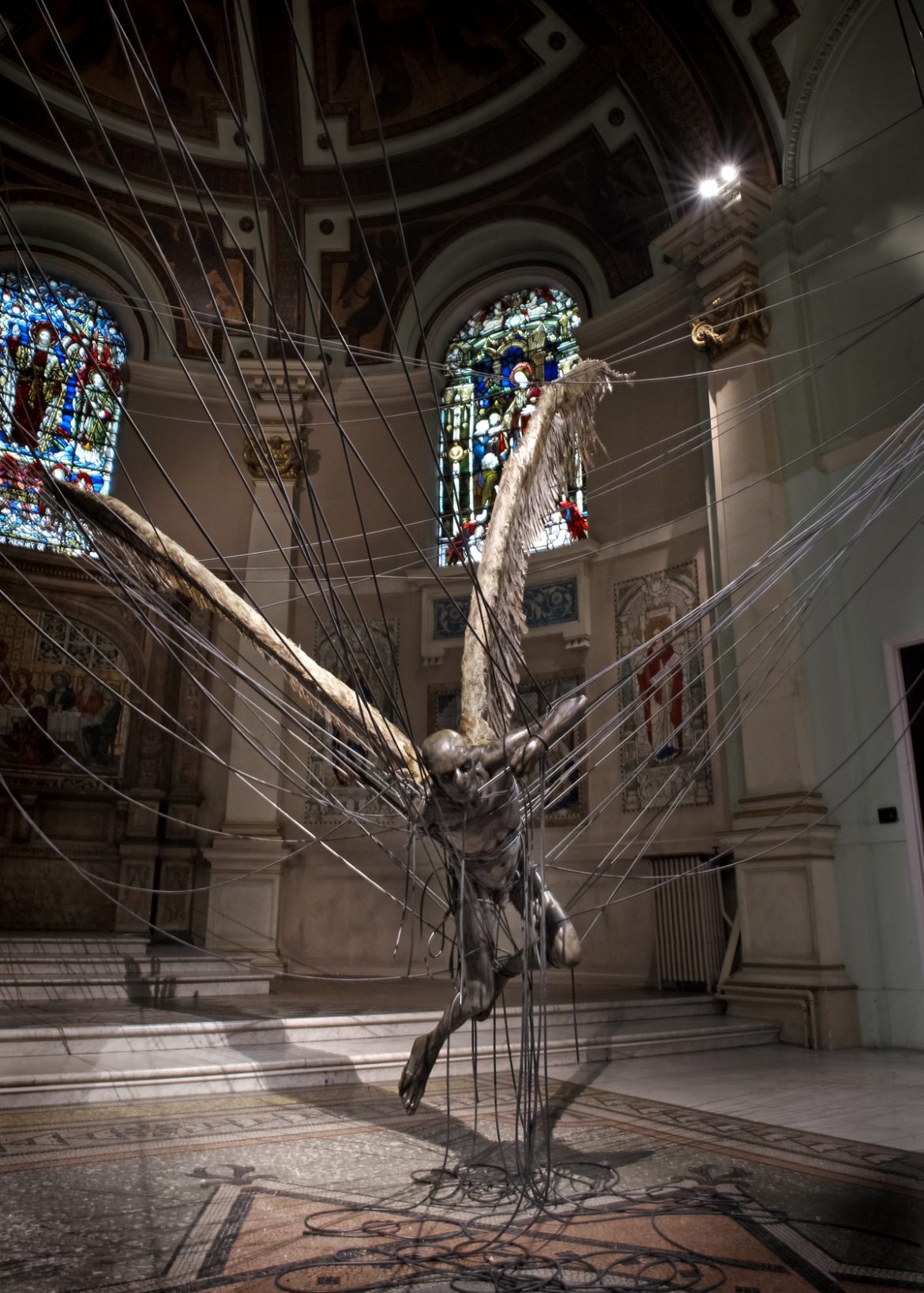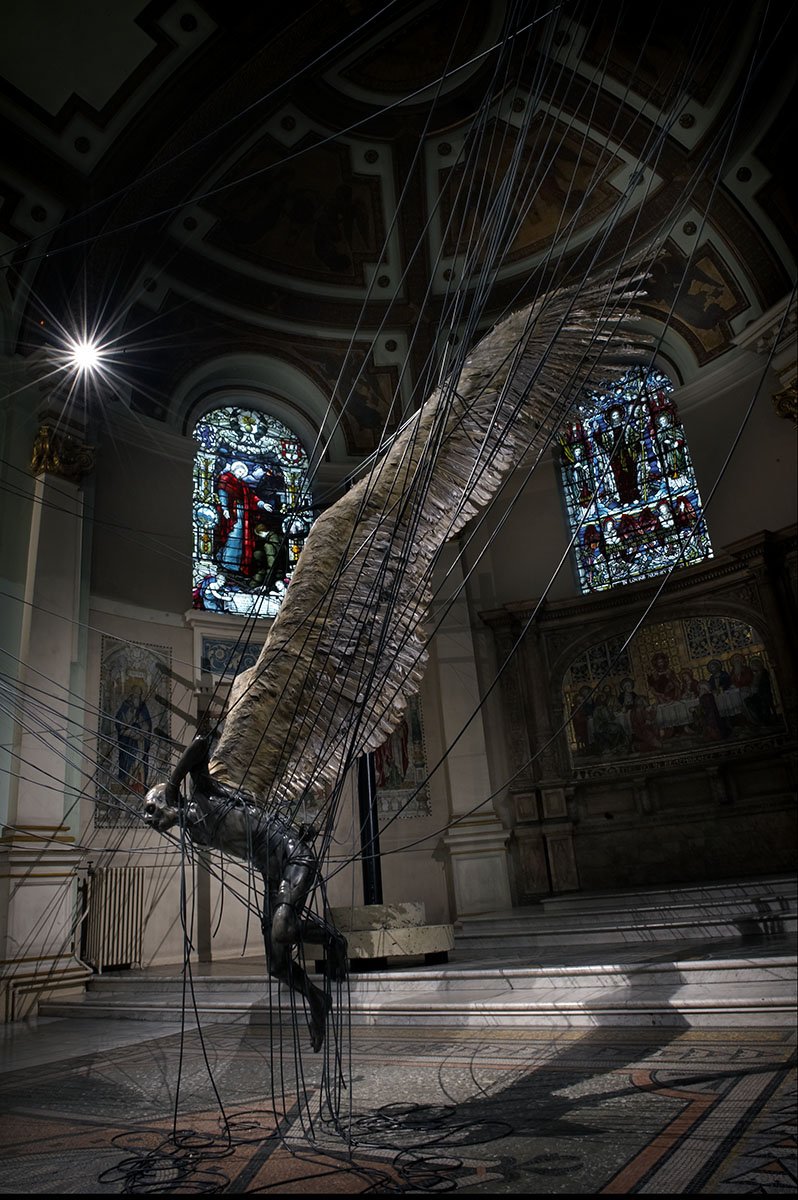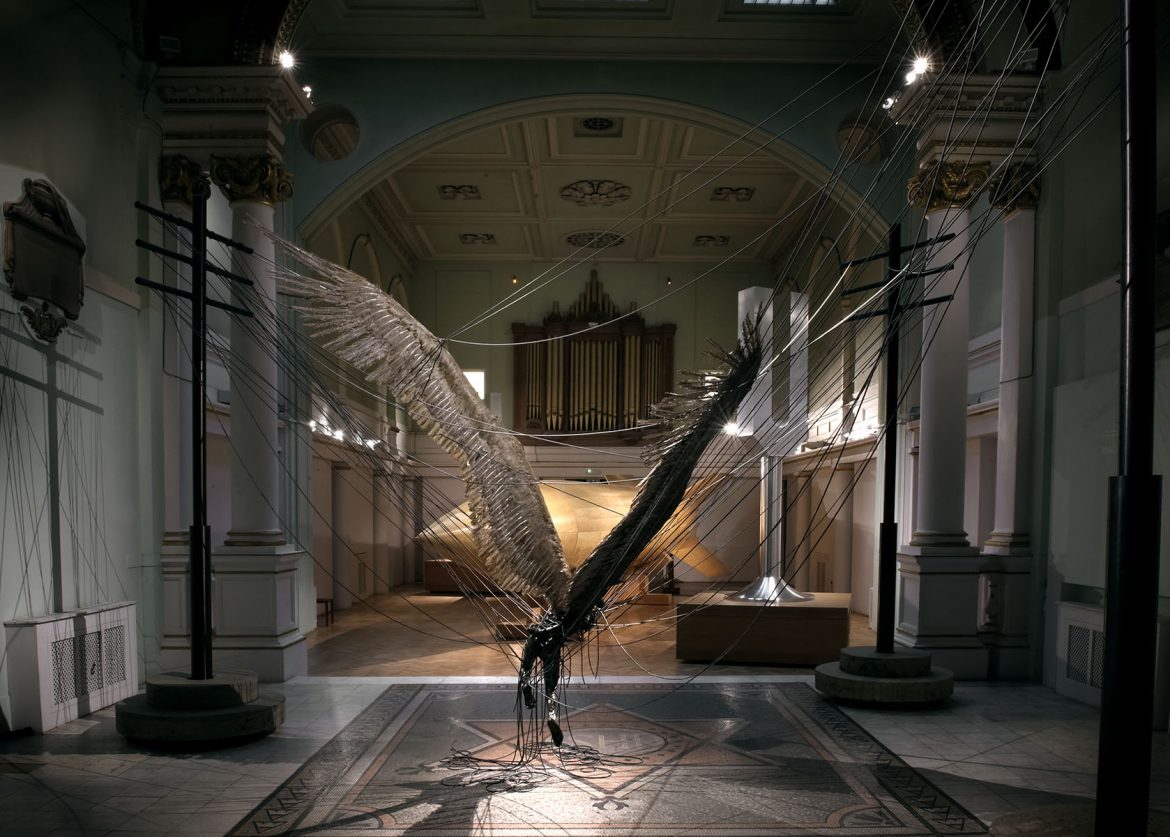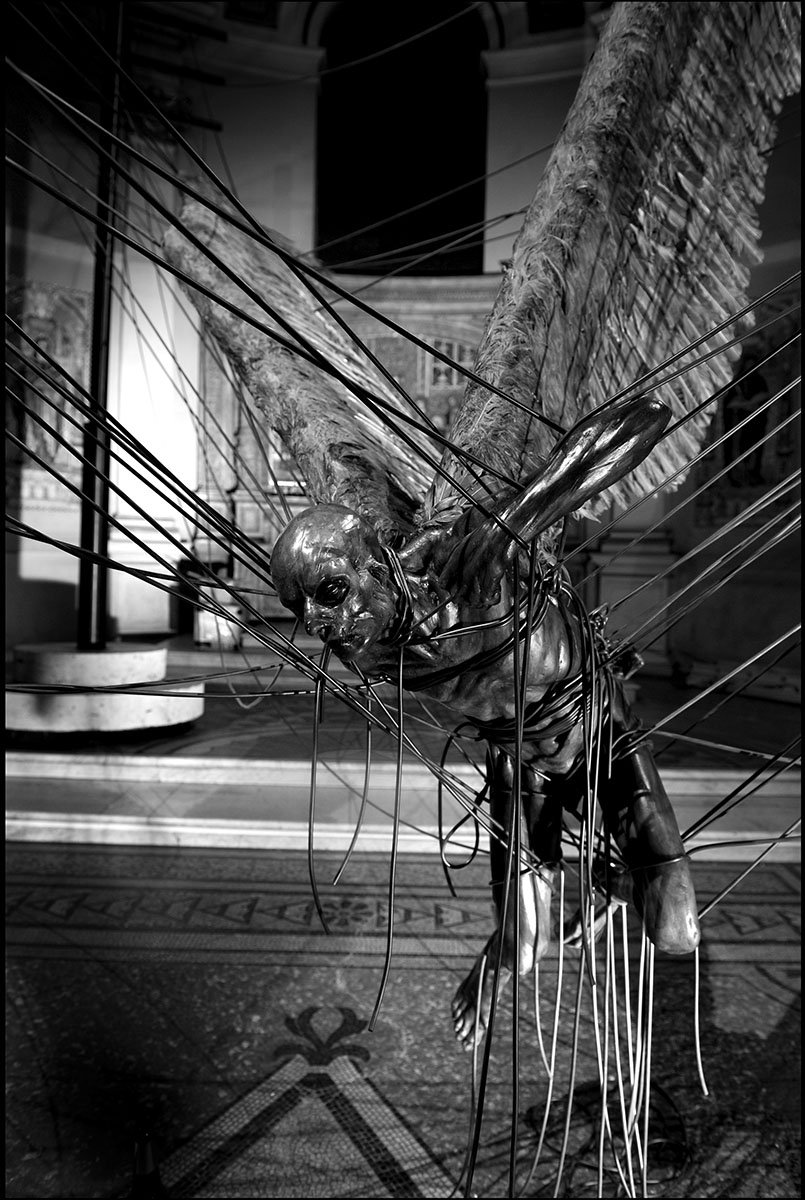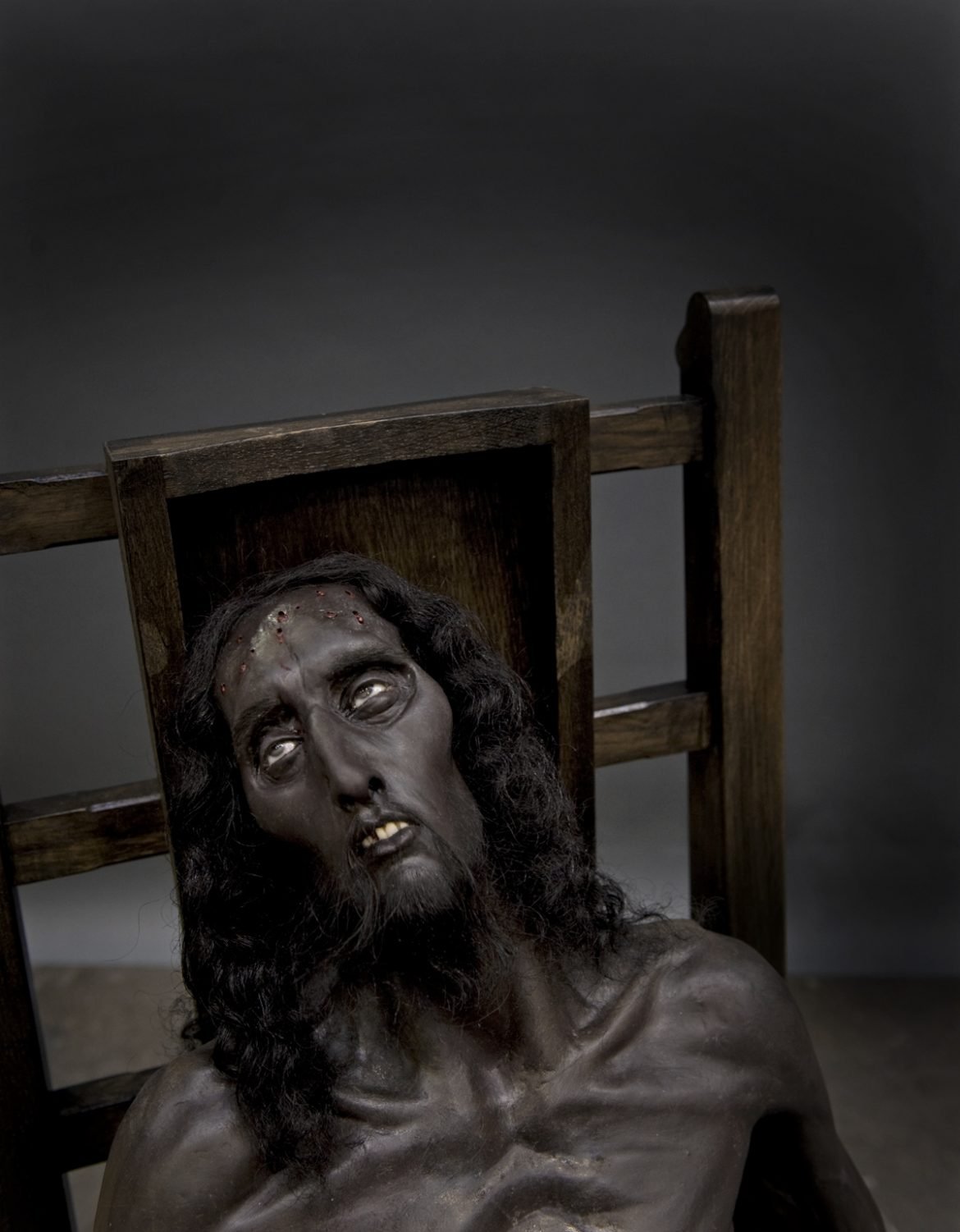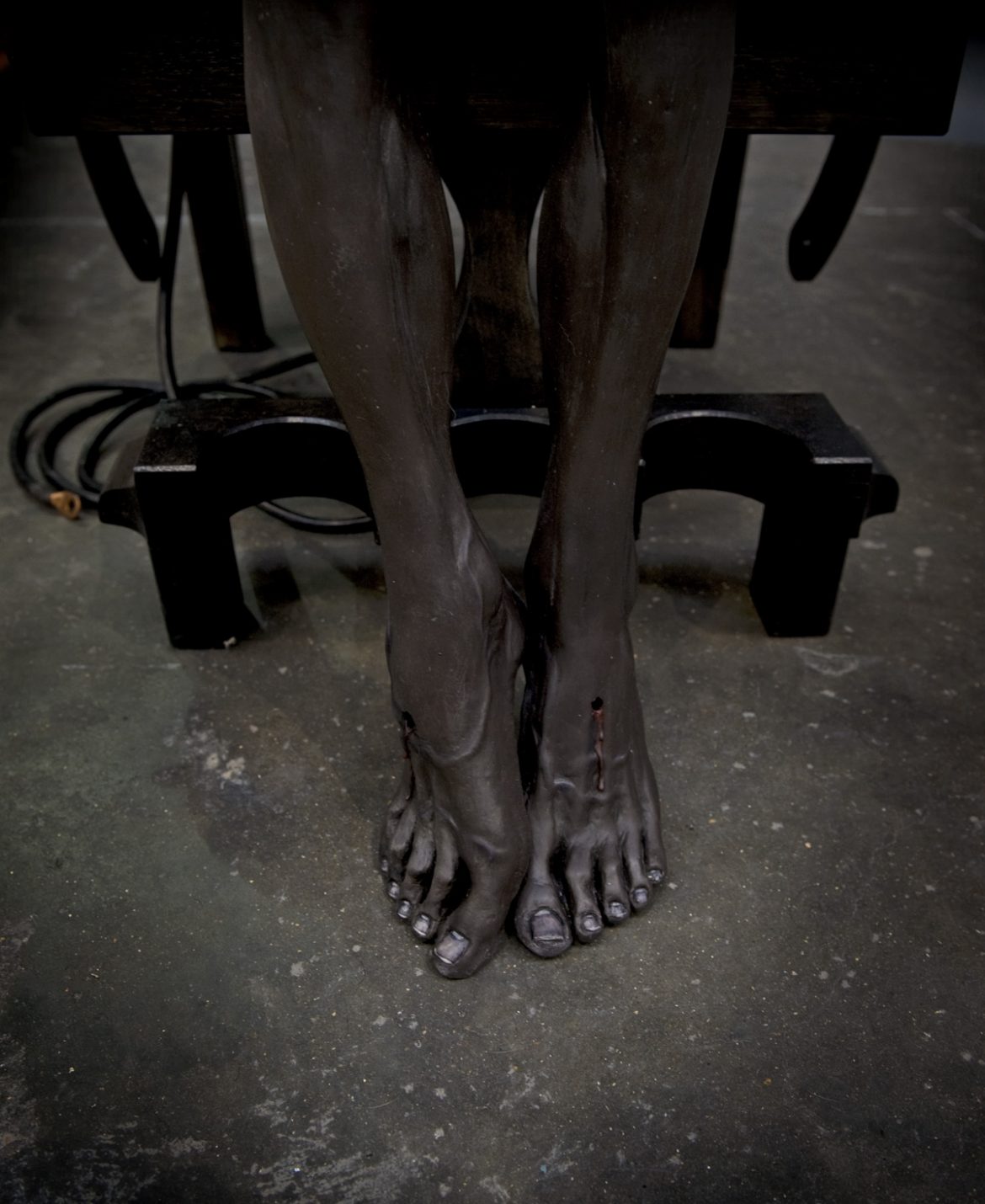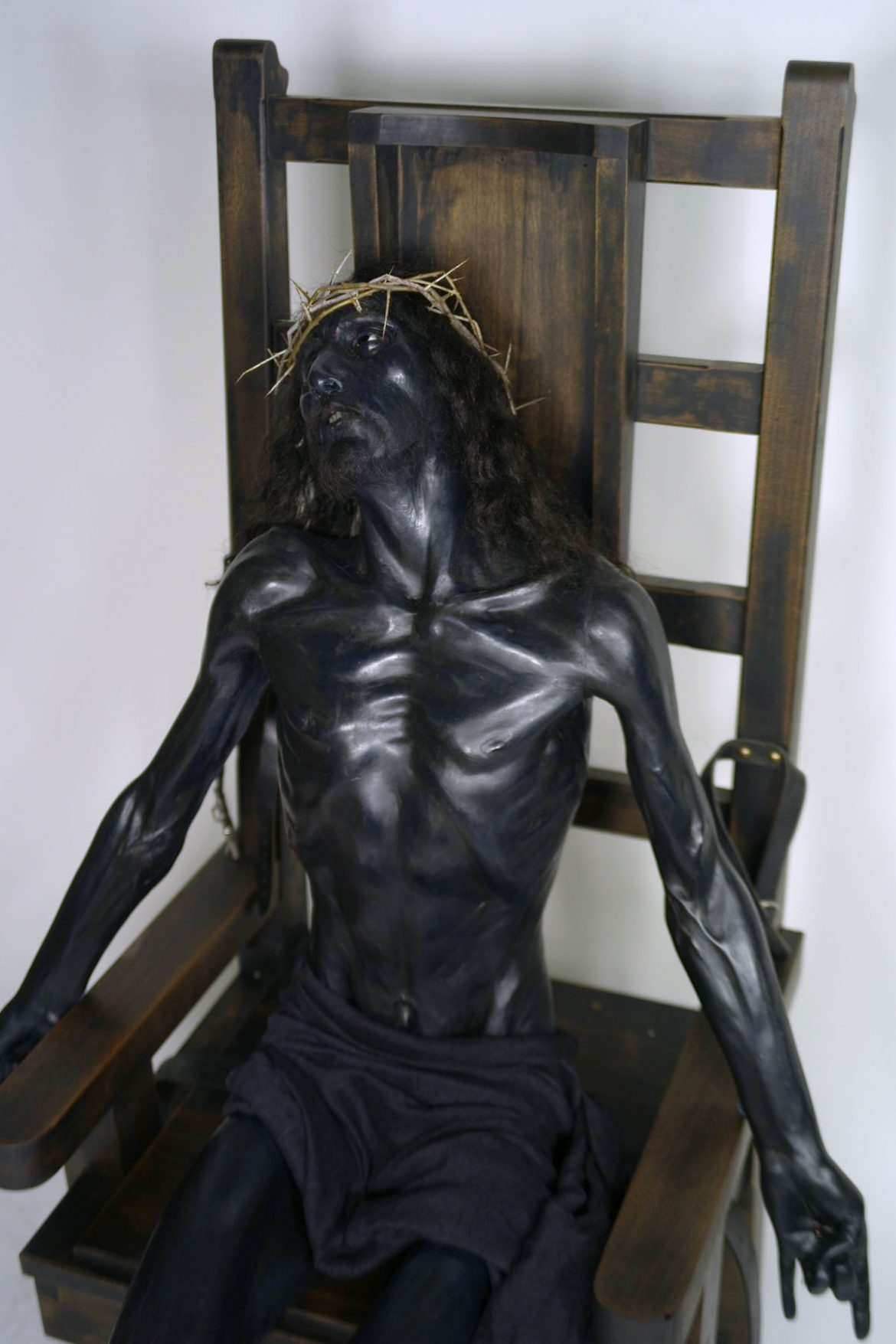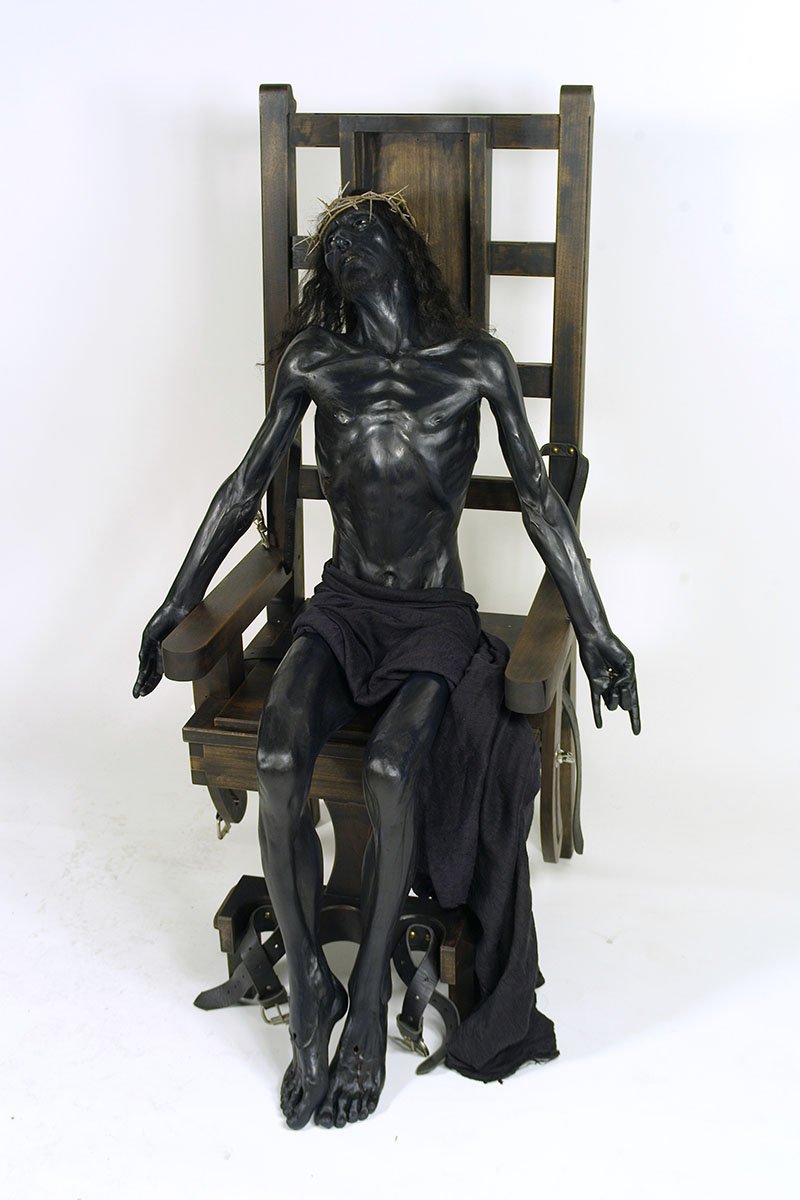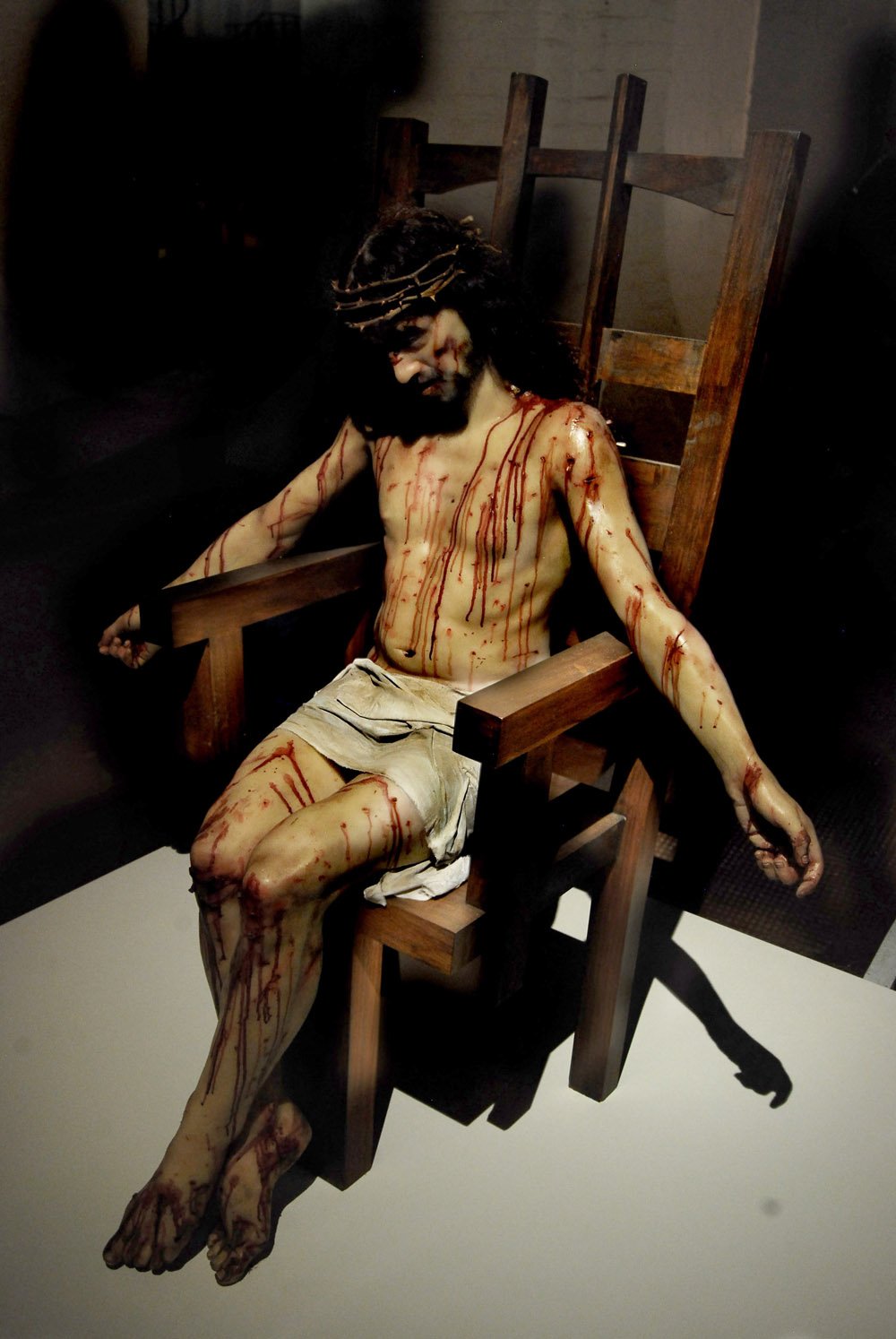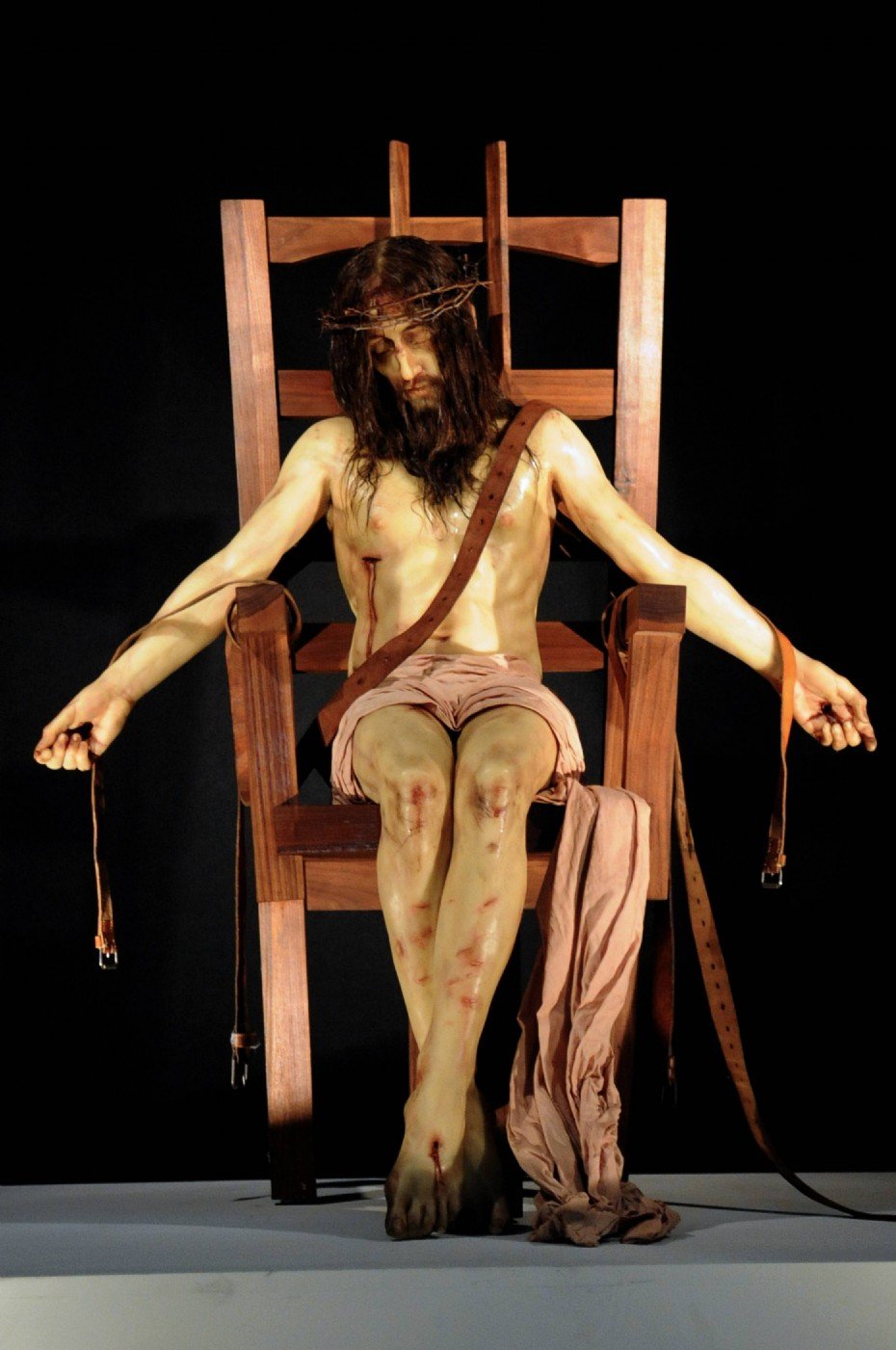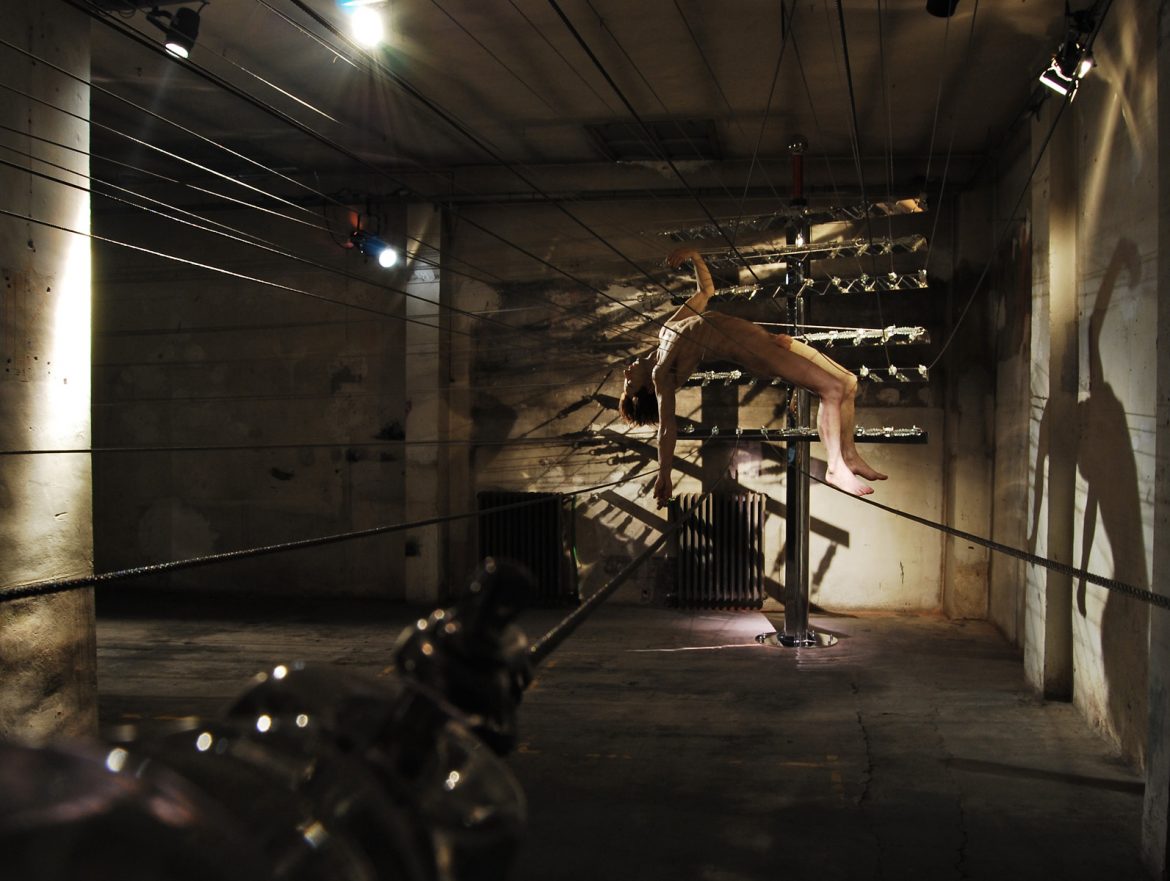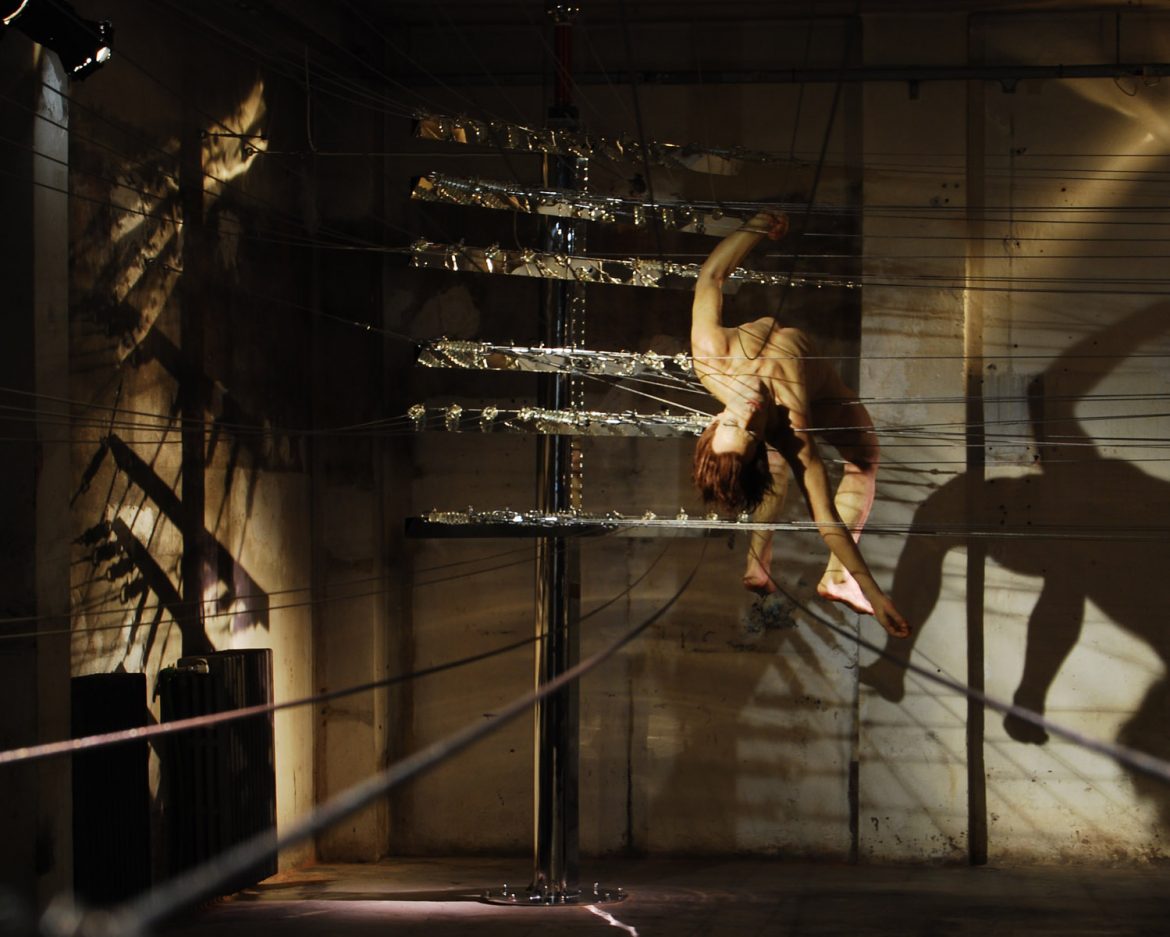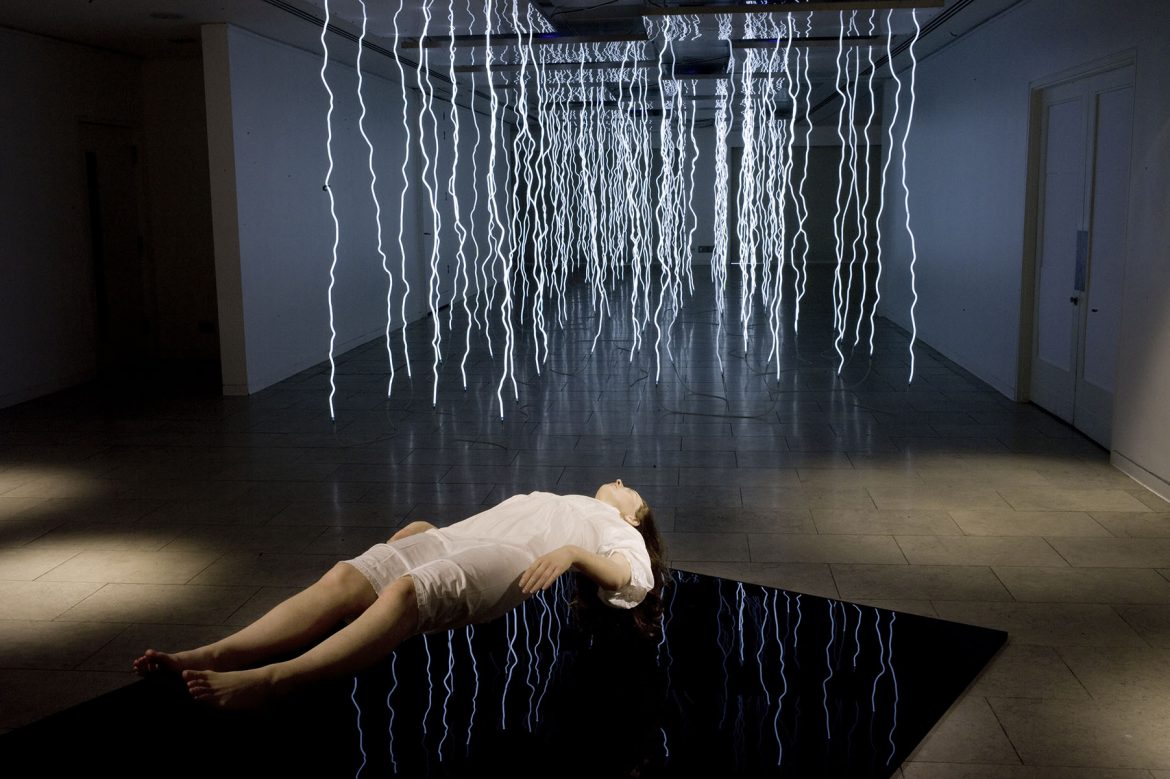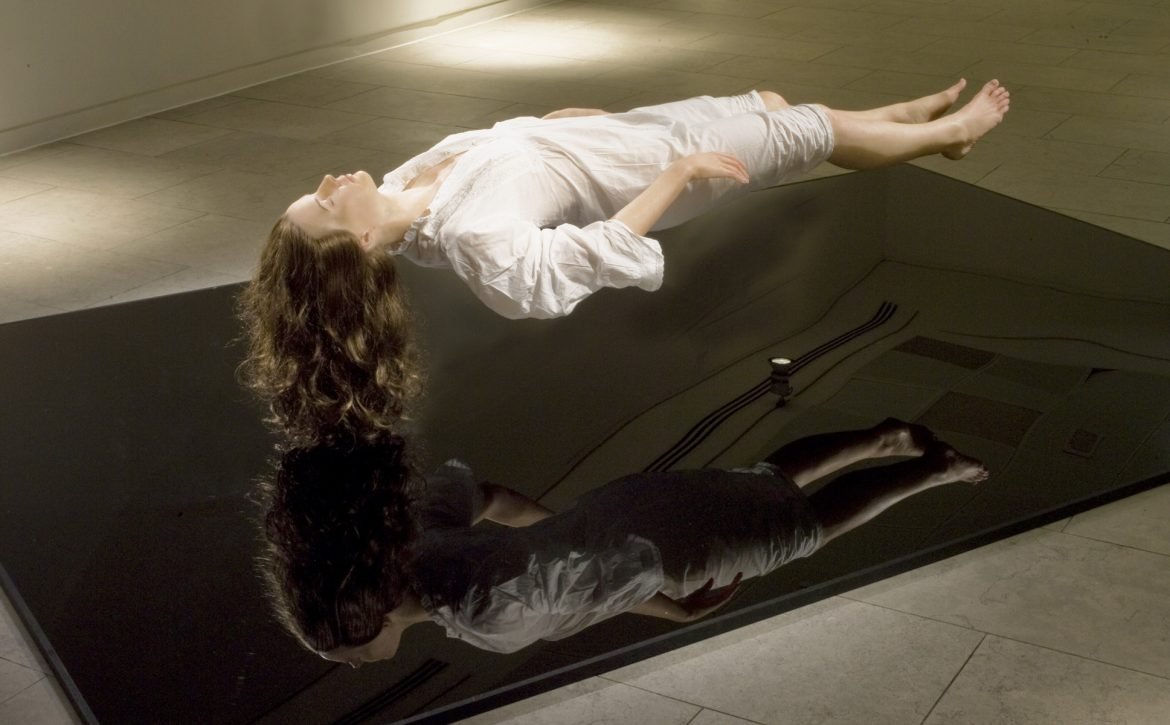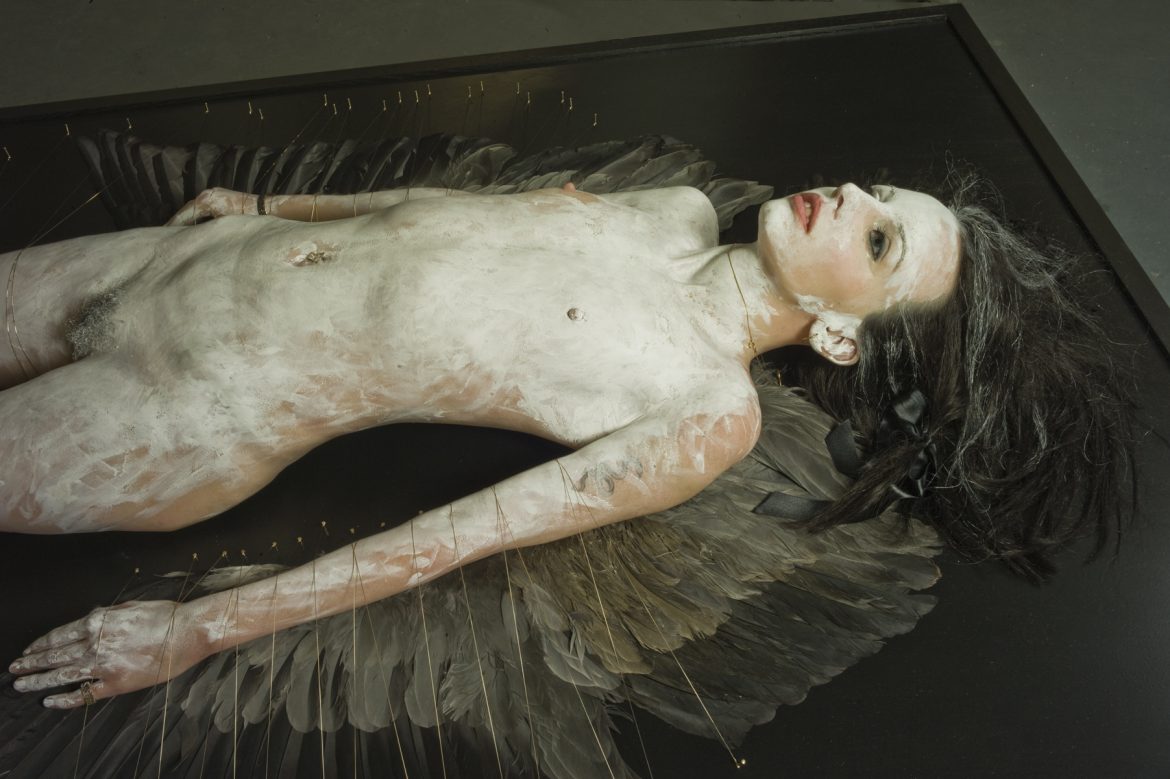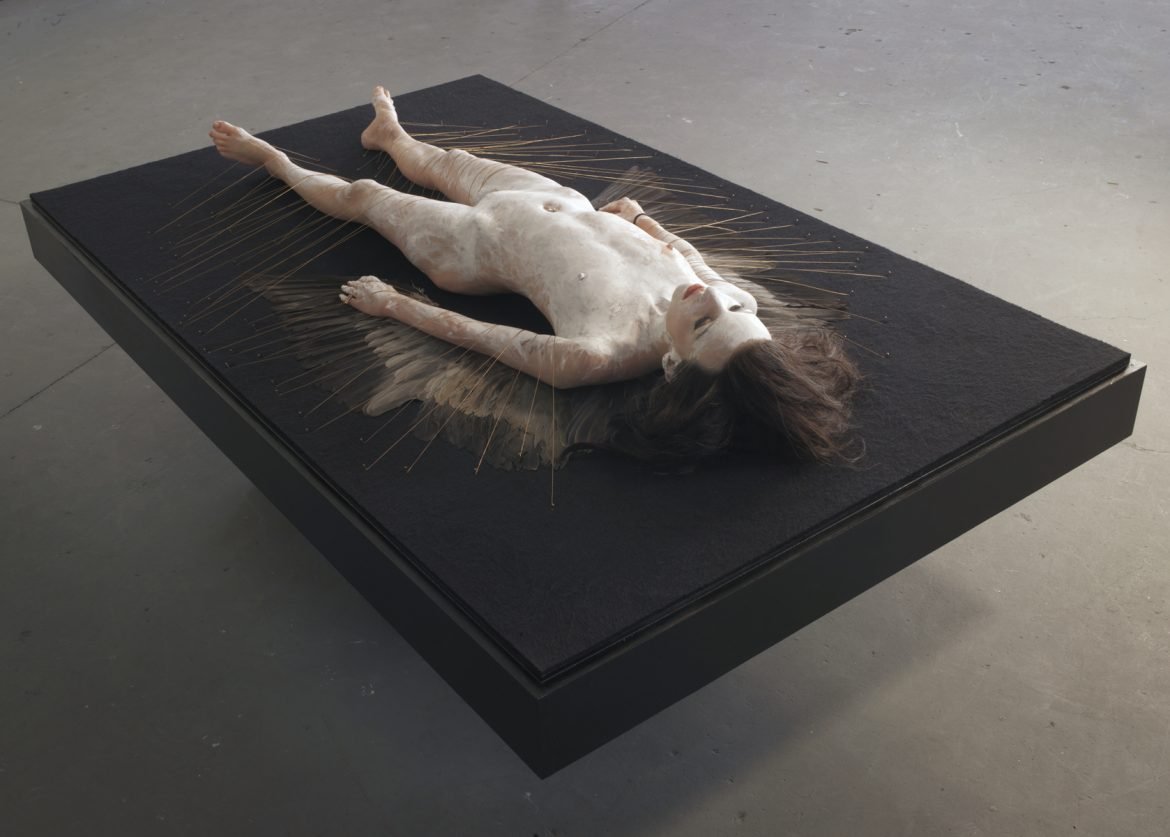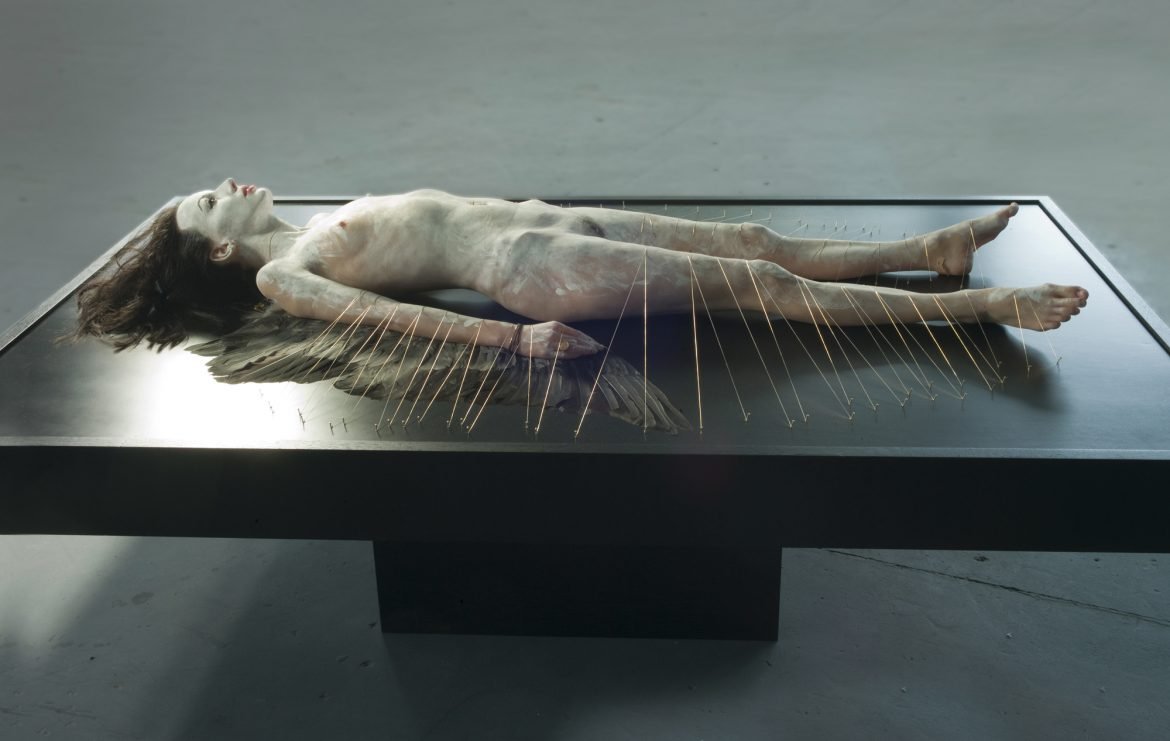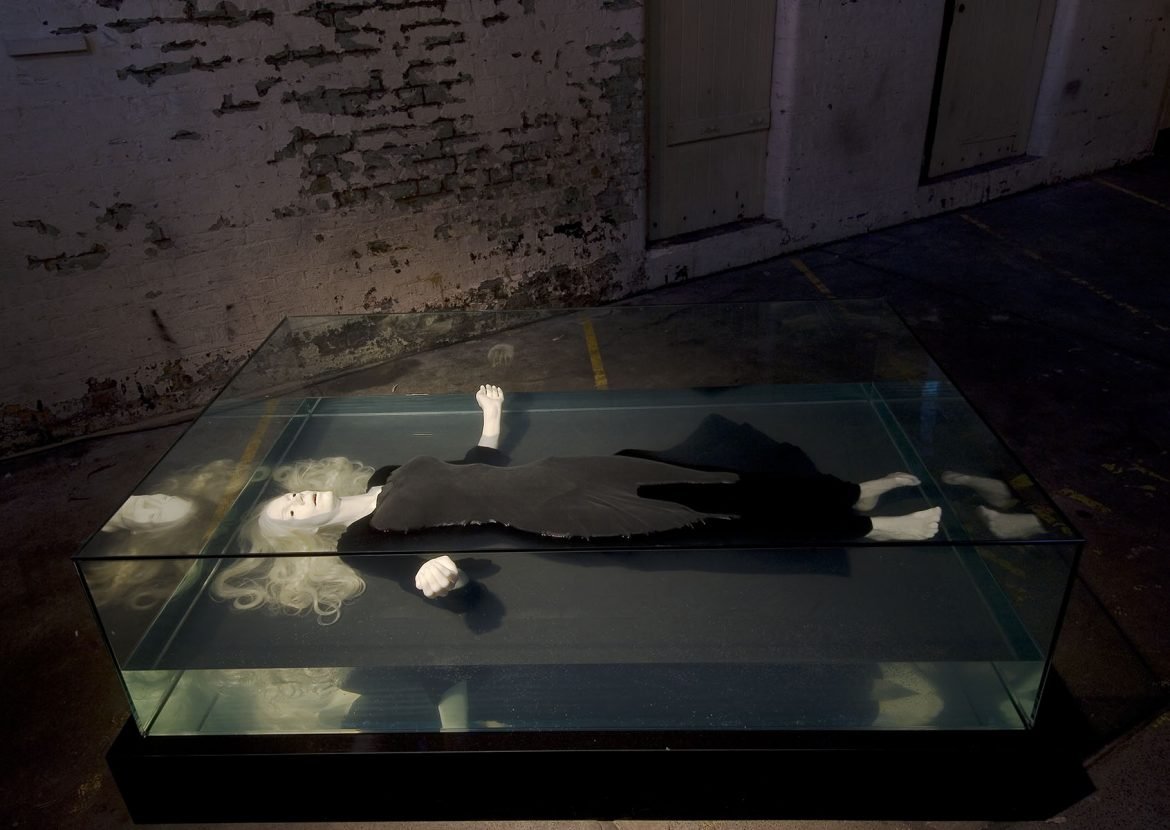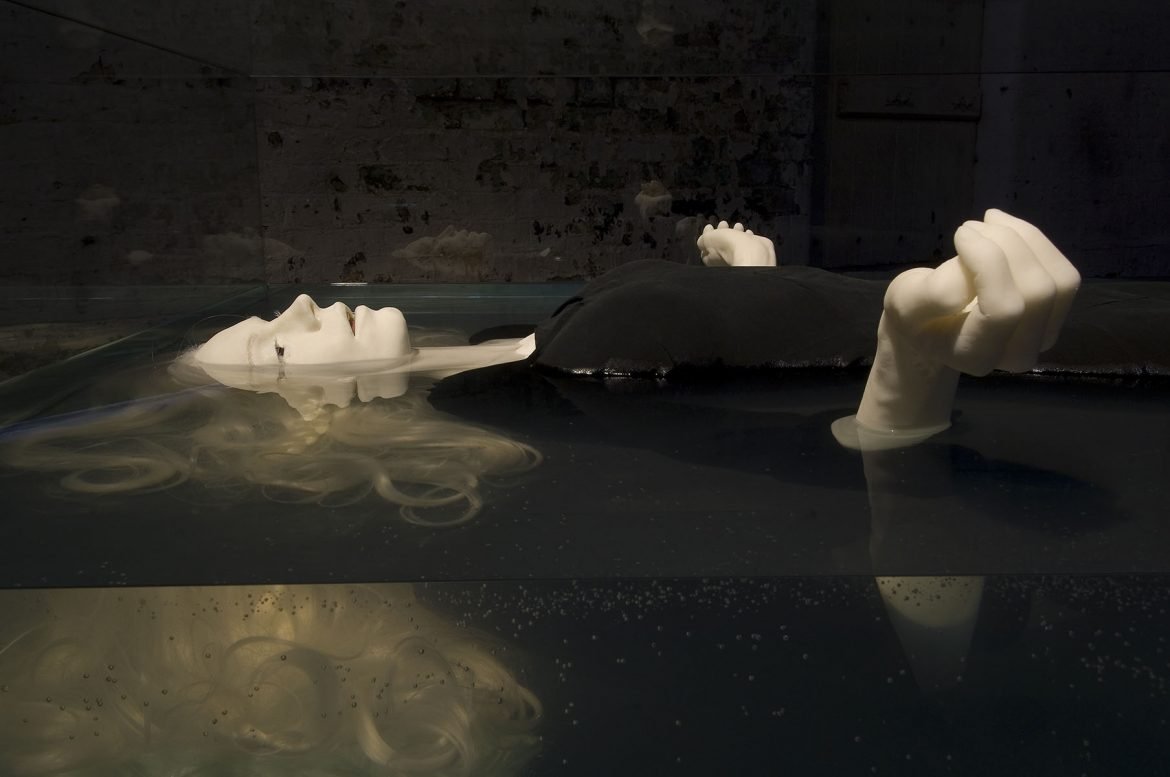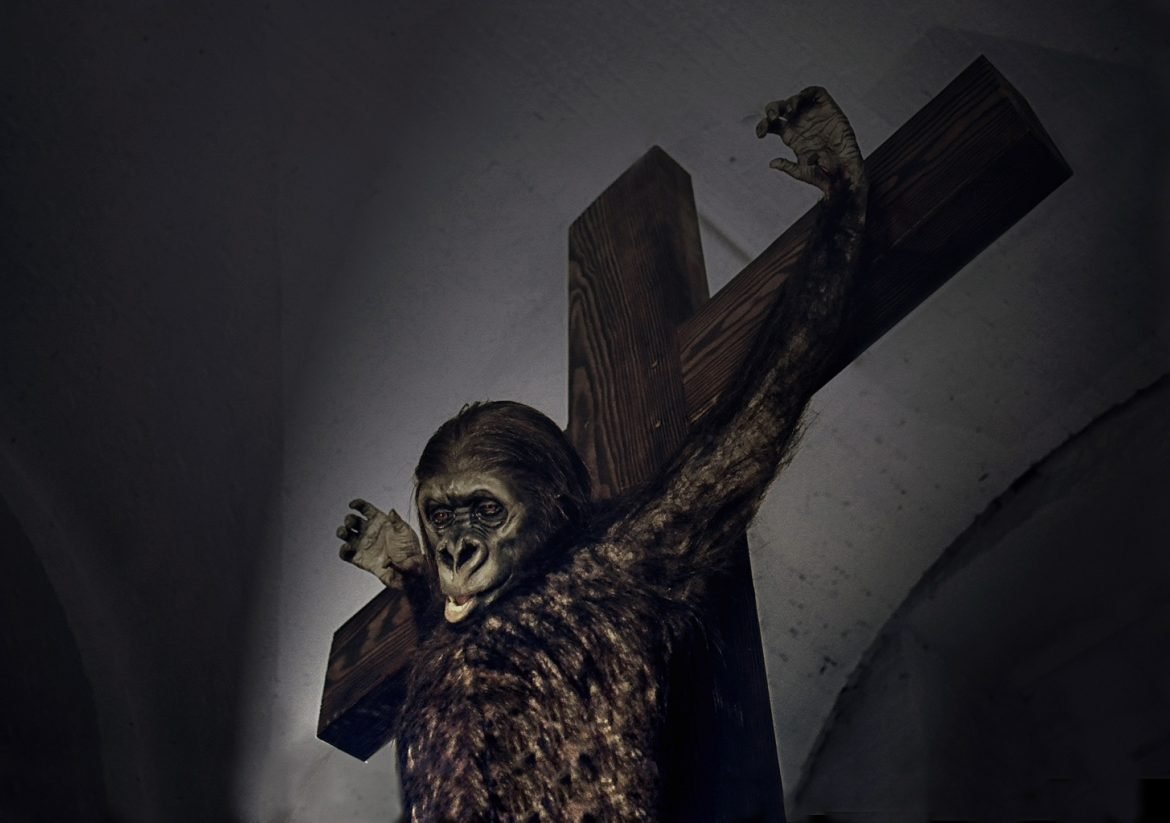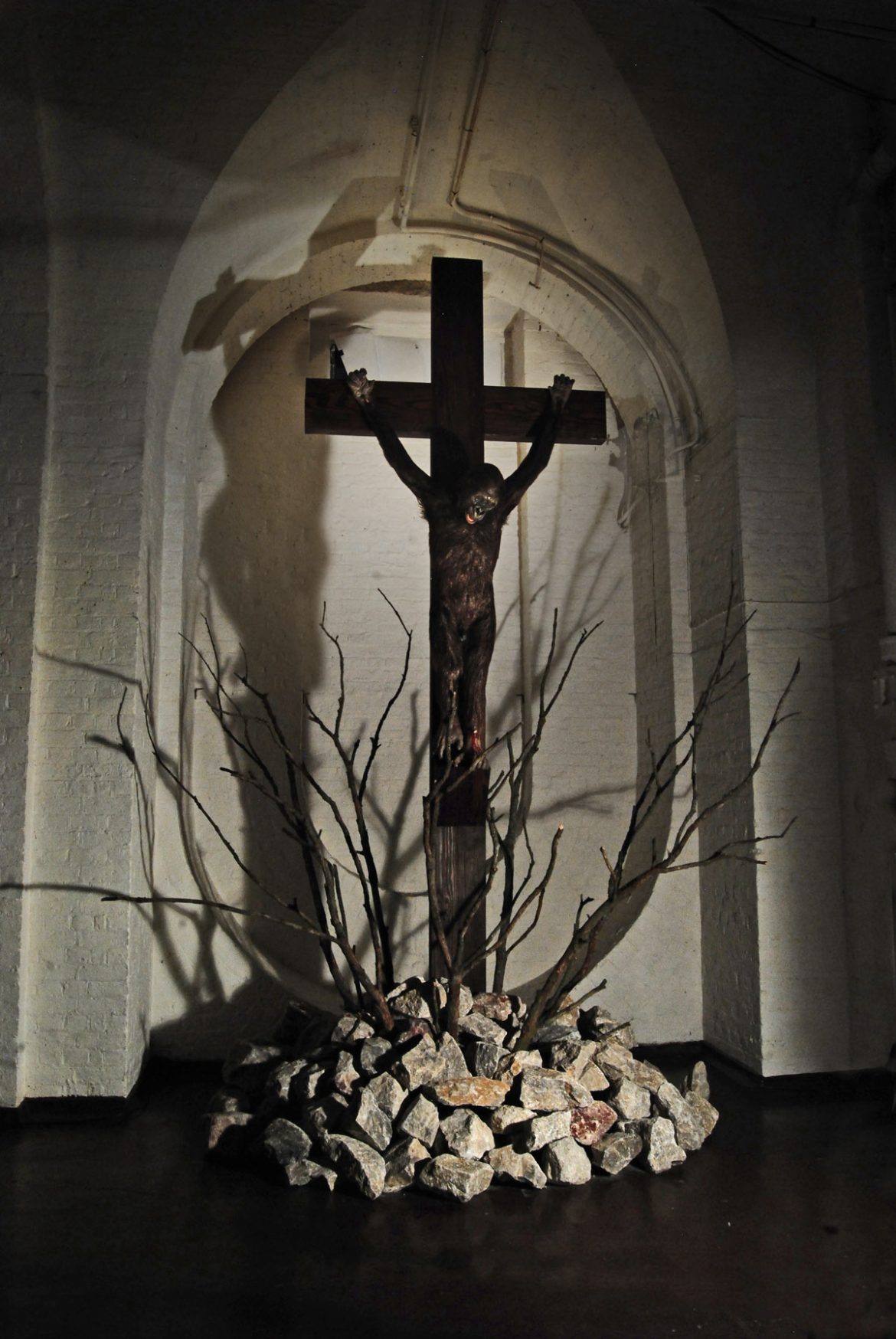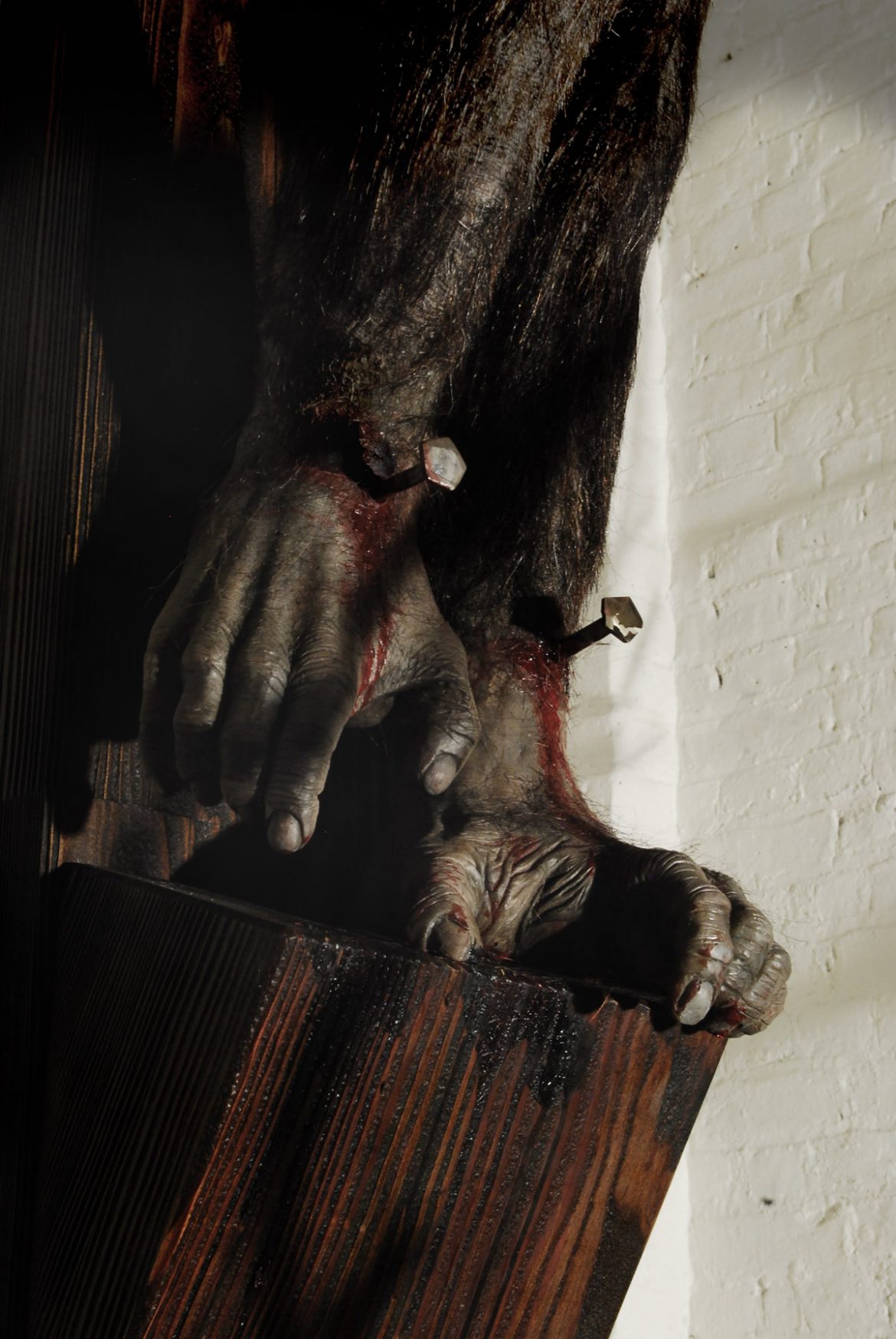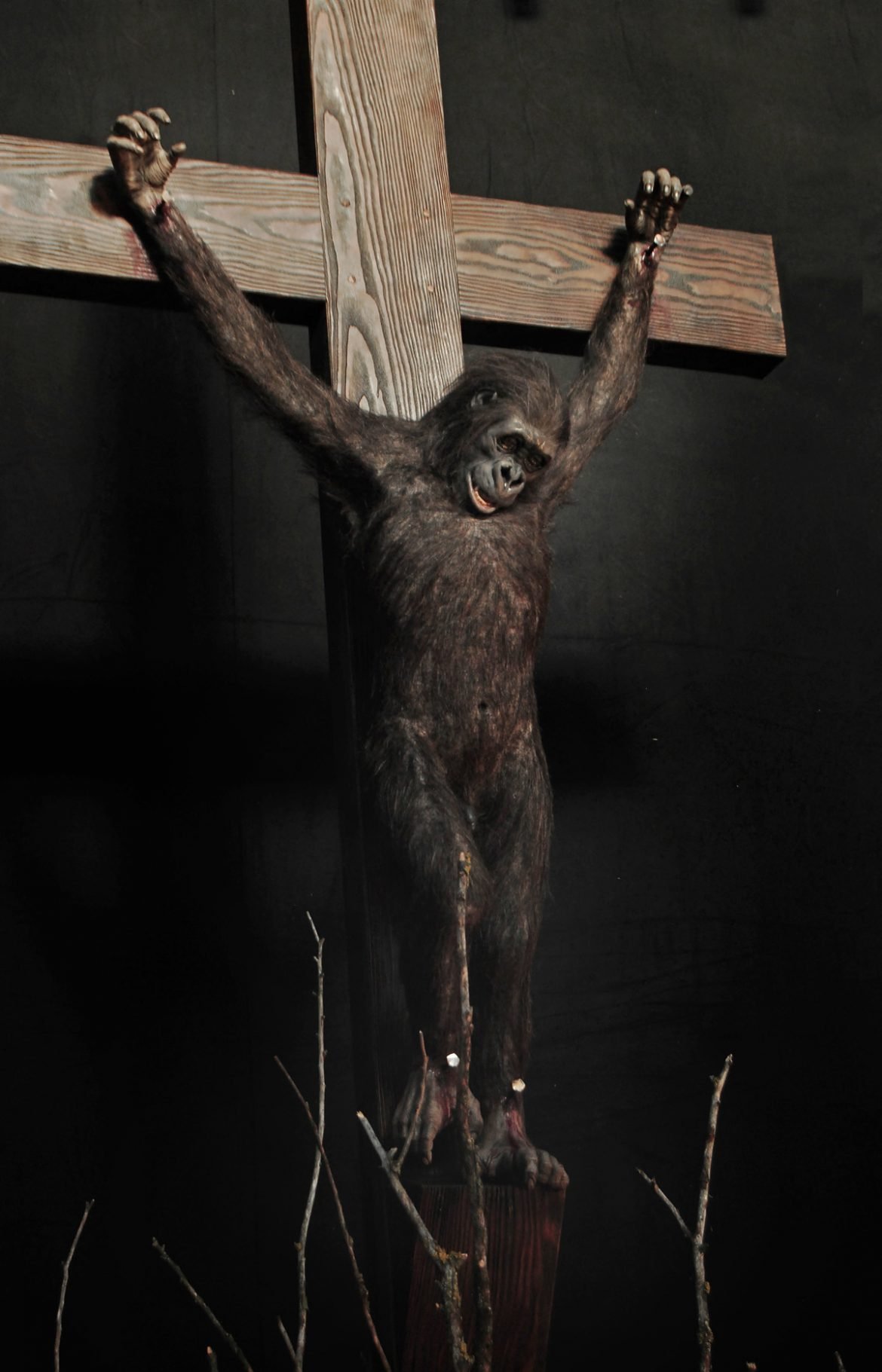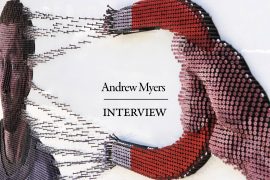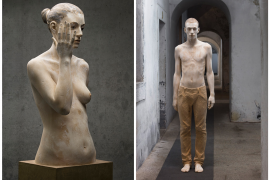Symbolism, the occult, a blasphemous surrealism and the clash of religion and science dominate this selection of Paul Fryer’s (b.1963) visual work. The Leeds born and reared artist is not confined to any particular genre, shifting effortlessly from a detailed scenes from the Passions of Christ, to a huge engineered tuning fork, uncannily resonating through the viewer’s thoracic cavity as a future religion’s symbol. Electricity, the role of science and natural phenomena underline Paul Fryer’s designs. His collaborations with Colin dancer, an engineer/physicist, have rendered his ideas as formidable and immersing experiences; stars, soundwaves, electromagnetic fields an other forces bend to the artist’s will.
And we become entranced by the visual gloom and eeriness his artworks emanate.
Following the tradition of wax sculptors, Paul Fryer’s statues are alive and simultaneously frozen in time, unfolding images of hellish landscapes, the horrors they have seen. At first glance it one might see only the obvious, the netherworld laid in front of him, yet the artist has placed crucial elements in his artworks to hint at something deeper.
Lucifer, the Morning light is a magnificent installation, depicting the fallen angel in agony, entangled in a web, his body twisted, writhing in agony, suspended and unable to move. One has to look closer to observe that the web is made of telegraph wires, the posts from which they are secured, looming like crosses before Lucifer himself, a waxen figure, the frail human caught in a horrible web he wrought on his one, the blight of technology.
His seminal work series, The Pieta, confronts the viewer, demanding his attention. It’s exhibition in France caused uproar due to the work’s perceived blasphemous nature. They, and many others, saw and continue to see the image of Christ after the Apokathelosis, the Descent from the Cross, unable to digest the statue’s meaning, the symbolism inherent to it. The electric chair Christ is placed upon is not understood, nor even observed. As Bishop Jean-Michel di Falco said at the time, defending his exhibition of a Fryer’s Pieta in his bishopric’s cathedral: “The scandal is not where one believes it to be. I wanted the provoked shock to make us once again conscious of the scandal of someone being nailed to a cross. Usually, one does not feel any real emotions in front of something really scandalous: the Crucifixion. If Jesus had been sentenced today, he would have to reckon with the electric chair or other barbaric methods of execution. Scandalous is therefore not Jesus in the electric chair, but the indifference to his crucifixion.” via Mirror.co.uk
As with Pieta, electricity forms, yet again, the foundation for Martyr, a memorial to unlucky linemen electrocuted by falling onto wires; martyrs for the electric revolution, suffering to expand the electric grid, bringing light into lands of technological darkness.
“A Privilege of Dominion”
Winged waxen creatures sit atop cantilevered staircases For Laplace, symbol of architectural/engineering achievement. Each one sits upon his own stairway to heaven, the travel cut short, stuck on the last step of the unfinished stairway. The question would be, who needs man-made constructions to rise, when there are wings able to carry them high? Modern man missing the obvious, substituting innate powers and traits with technology in the role of panacea.
